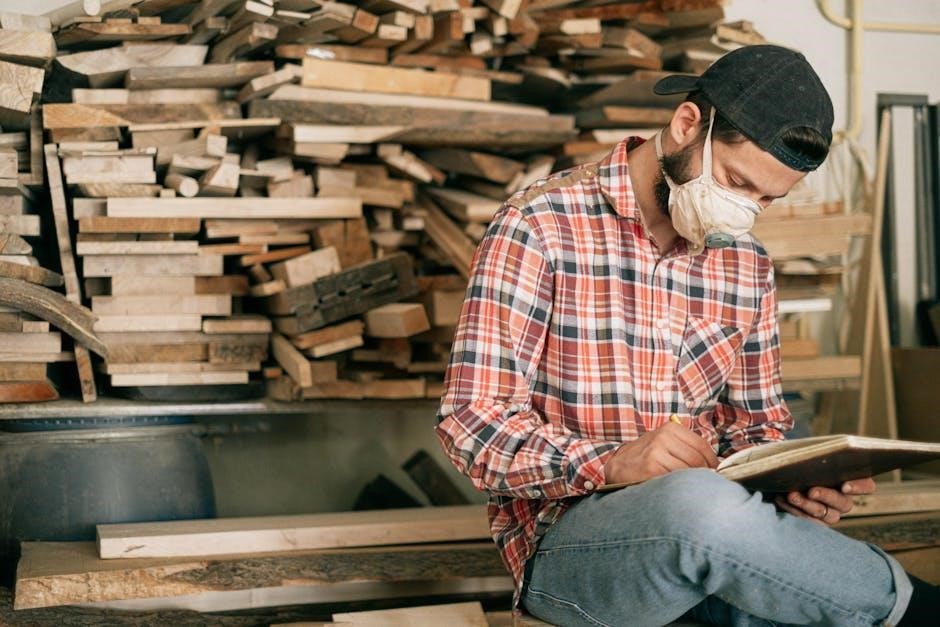Vermont Castings Defiant Owners Manual Article Plan
This guide offers a comprehensive overview of Vermont Castings Defiant wood stoves, focusing on owners manuals. It will cover topics such as model identification, installation, operation, maintenance, parts, and safety for a well-rounded understanding.
The Vermont Castings Defiant wood stove is a renowned heating appliance, celebrated for its enduring design and efficient heating capabilities. Understanding its operation and maintenance is crucial for optimal performance and longevity. This guide delves into the specifics of the Defiant stove, aiming to provide owners with essential information sourced directly from the owners manuals.
These stoves, known for their classic aesthetics and robust construction, have been a popular choice for homeowners seeking a reliable and aesthetically pleasing heating solution. The Defiant series has evolved over the years, with various models incorporating different technologies, such as catalytic and non-catalytic combustion systems.
This article serves as a roadmap to navigating the wealth of information contained within the Vermont Castings Defiant owners manuals. We will explore key aspects, including model identification, installation guidelines, operating instructions, maintenance procedures, troubleshooting tips, and safety precautions. Furthermore, we’ll differentiate between catalytic and non-catalytic models, providing clarity on their unique operational characteristics. Ultimately, this guide empowers Defiant owners to maximize the benefits of their stoves while ensuring safe and efficient operation.
Locating Your Specific Model Number
Identifying the specific model number of your Vermont Castings Defiant stove is the first and most crucial step in accessing the correct owners manual and replacement parts. The model number is essential for ensuring you have the right information regarding installation, operation, and maintenance specific to your stove’s design and features.
Typically, the model number can be found on a metal plate or sticker affixed to the stove. Common locations for this identification plate include the rear of the stove, the side panels, or sometimes inside the ash door. Look for a series of numbers and letters that clearly designate the model. For instance, you might find “Defiant 1975,” “Defiant 1910,” or “Defiant 1610.”
Once you have located the model number, make a note of it. This number will be your key to unlocking a wealth of information. With the correct model number, you can access the appropriate owners manual online, order the correct replacement parts, and ensure you are following the proper maintenance procedures for your specific Vermont Castings Defiant stove. Accurate model identification prevents errors and ensures the safe and efficient operation of your stove.
Understanding Your Defiant Model: 1975 vs. 1910 vs. 1610
The Vermont Castings Defiant stove came in several models, each with distinct characteristics. Understanding the differences between models like the 1975, 1910, and 1610 is crucial for effective operation and maintenance.
The Defiant 1975 model, often referenced in manuals, can be either a non-catalytic or catalytic wood-burning heater. This versatility is key to its design. In contrast, the Defiant 1910 is specifically a catalytic-equipped wood-burning heater. Catalytic models like the 1910 are designed for increased efficiency and reduced emissions, utilizing a catalytic combustor to burn off gases and particles.
The Defiant 1610, on the other hand, is a non-catalytic wood-burning heater. This model relies on a different combustion process, lacking the catalytic element found in the 1910. The absence of a catalytic combustor affects its efficiency and emissions profile compared to the 1910. Therefore, knowing your model number is important.
Each model has a specific owner’s manual. Differences in design and function mean that operating and maintaining a 1975 will differ from a 1910 or 1610.
Installation Procedures (Referencing the Manual)
Proper installation of your Vermont Castings Defiant stove is critical for safe and efficient operation. Always refer to the specific installation manual for your model (e.g., 1975, 1910, or 1610) as procedures can vary.
The manual provides detailed instructions on clearances to combustible materials. It also outlines the correct chimney connections, and floor protection requirements. Following these guidelines prevents fire hazards and ensures compliance with local building codes. Typically, the manual will show diagrams and measurements for safe distances.
Furthermore, the installation section addresses the proper venting system. Whether connecting to an existing chimney or installing a new one, the manual specifies the correct diameter and height. It highlights the importance of a clean and unobstructed flue for proper draft. In addition, the manual may include instructions for assembling certain stove components.
Before beginning the installation, carefully read the entire manual. Understanding each step ensures a safe and effective setup. Professional installation is recommended if you lack experience or are unsure about any aspect of the process. A correctly installed stove operates safely.
Operating Instructions (Referencing the Manual)
The Vermont Castings Defiant owner’s manual provides essential operating instructions for safe and efficient wood burning. Before your first fire, thoroughly review the manual specific to your Defiant model (e.g., 1975, 1910, or 1610).
The manual details the proper starting procedures, including the recommended type and amount of kindling and fuel. It explains how to control the air intake for optimal combustion and heat output. Understanding these controls allows you to adjust the burn rate and maintain a consistent temperature.
Furthermore, the manual describes how to properly load wood into the firebox. It also covers the importance of maintaining an adequate air supply for complete combustion. Instructions for using the stove’s damper system are also included. These instructions ensure safe and efficient operation.
The manual also addresses specific operating characteristics of catalytic versus non-catalytic models. It describes how to engage and disengage the catalytic combustor (if applicable). It also offers tips for achieving clean and efficient burns. By following the manual’s guidelines, you can maximize heat output, minimize emissions, and ensure years of reliable service from your Defiant stove.
Maintenance and Troubleshooting (Referencing the Manual)
The Vermont Castings Defiant owner’s manual is your primary resource for maintenance and troubleshooting. Regular maintenance is crucial for the stove’s efficiency, safety, and longevity. The manual outlines the recommended maintenance schedule, including chimney inspections and cleaning.
The manual details how to properly clean the stove’s interior, including removing ash and creosote buildup. It explains how to inspect and maintain the door seals to ensure an airtight fit. Instructions for checking and replacing gaskets are typically included.
For troubleshooting, the manual often includes a section addressing common issues. These issues include difficulty starting a fire, excessive smoke, or poor heat output. The manual suggests possible causes and solutions for each problem. This section will guide you through initial troubleshooting steps before seeking professional assistance.
Furthermore, the manual may provide diagrams illustrating the stove’s components. These diagrams will help you identify parts and understand their function. The manual may also include instructions for minor repairs or adjustments. Always consult the manual before attempting any repairs or modifications to your Defiant stove.
Non-Catalytic vs. Catalytic Models: Key Differences in Operation
Vermont Castings Defiant stoves come in both non-catalytic and catalytic models, each with distinct operational characteristics. Understanding these differences is crucial for efficient and clean burning.
Non-catalytic models rely on stove design and airflow to achieve complete combustion. They typically operate at higher temperatures to burn off gases and particles. Operation involves managing air intake to control the burn rate and heat output. These models are generally simpler to operate.
Catalytic models feature a catalyst inside the stove, usually a ceramic honeycomb coated with precious metals. The catalyst lowers the ignition temperature of flue gases, promoting more complete combustion at lower temperatures. This results in higher efficiency and reduced emissions.
Operating a catalytic stove involves a catalyst engagement process. The catalyst needs to reach a certain temperature before it becomes active. The owner’s manual provides instructions on how to engage and disengage the catalyst. Regular cleaning and maintenance of the catalyst are essential for optimal performance.
The owner’s manual for your specific Defiant model provides detailed instructions on how to operate it. This manual should explain the nuances of the burning process.
Finding Replacement Parts and Diagrams
Maintaining your Vermont Castings Defiant stove often requires replacing worn or damaged parts. Fortunately, finding the correct replacement parts and diagrams is usually straightforward.
The first step is to identify your specific Defiant model number. This will ensure you order the correct parts. With the model number, you can search online retailers specializing in stove parts.
Many retailers offer detailed diagrams of Defiant stoves, which can be invaluable when identifying the part you need. These diagrams typically show an exploded view of the stove, with each part labeled and numbered.
Websites may also offer parts lists that correspond to the diagrams. This makes it easy to find the part number and order the correct replacement. Some retailers may also offer live chat with technicians who can assist you in finding the right parts.
Genuine Vermont Castings replacement parts are recommended for optimal performance and longevity. Check the Vermont Castings website or authorized dealers for these parts. Always verify the part number and compatibility before placing your order. This is to make sure you have the perfect fit.
Where to Download Manuals (PDF Links)
Accessing the correct owner’s manual for your Vermont Castings Defiant stove is crucial for safe operation and proper maintenance. Fortunately, several online resources offer downloadable PDF versions of these manuals.
The official Vermont Castings website is often the best place to start your search. Look for a “Manuals” or “Support” section on their website. There, you can typically find PDF manuals for various Defiant models.
Many third-party websites also host collections of appliance manuals, including those for Vermont Castings stoves. However, exercise caution when downloading from these sources. Ensure the website is reputable and the manual is the correct version for your specific model.
Search engines can be valuable tools for finding Defiant manuals. Try searching for “Vermont Castings Defiant [your model number] manual PDF.” This may lead you to direct download links or relevant forum discussions where users have shared manuals.
Always download and save a copy of the manual to your computer or device for easy access. This ensures you have the information you need, even without an internet connection. Be sure it’s the correct manual, as there might be slight differences.
Safety Precautions and Best Practices
Operating a Vermont Castings Defiant wood stove safely requires understanding and adhering to important safety precautions. Begin by thoroughly reading your stove’s owner’s manual, paying close attention to safety guidelines.
Ensure proper installation by a qualified professional, adhering to local building codes and manufacturer specifications. Maintain adequate clearances between the stove and combustible materials, as specified in the manual.
Use only seasoned, dry wood for fuel. Wet or unseasoned wood creates excessive smoke and creosote buildup, increasing the risk of chimney fires. Regularly inspect and clean your chimney to prevent creosote accumulation.
Install and maintain working smoke detectors and carbon monoxide detectors in your home. Test these devices regularly to ensure they are functioning correctly.
Never leave a burning stove unattended. Keep children and pets at a safe distance from the stove. Use a fire extinguisher specifically designed for wood-burning appliances.
Dispose of ashes properly in a metal container with a tight-fitting lid. Keep the container away from combustible materials. By following these precautions, you can enjoy the warmth and efficiency of your Defiant stove safely.



Be the first to reply